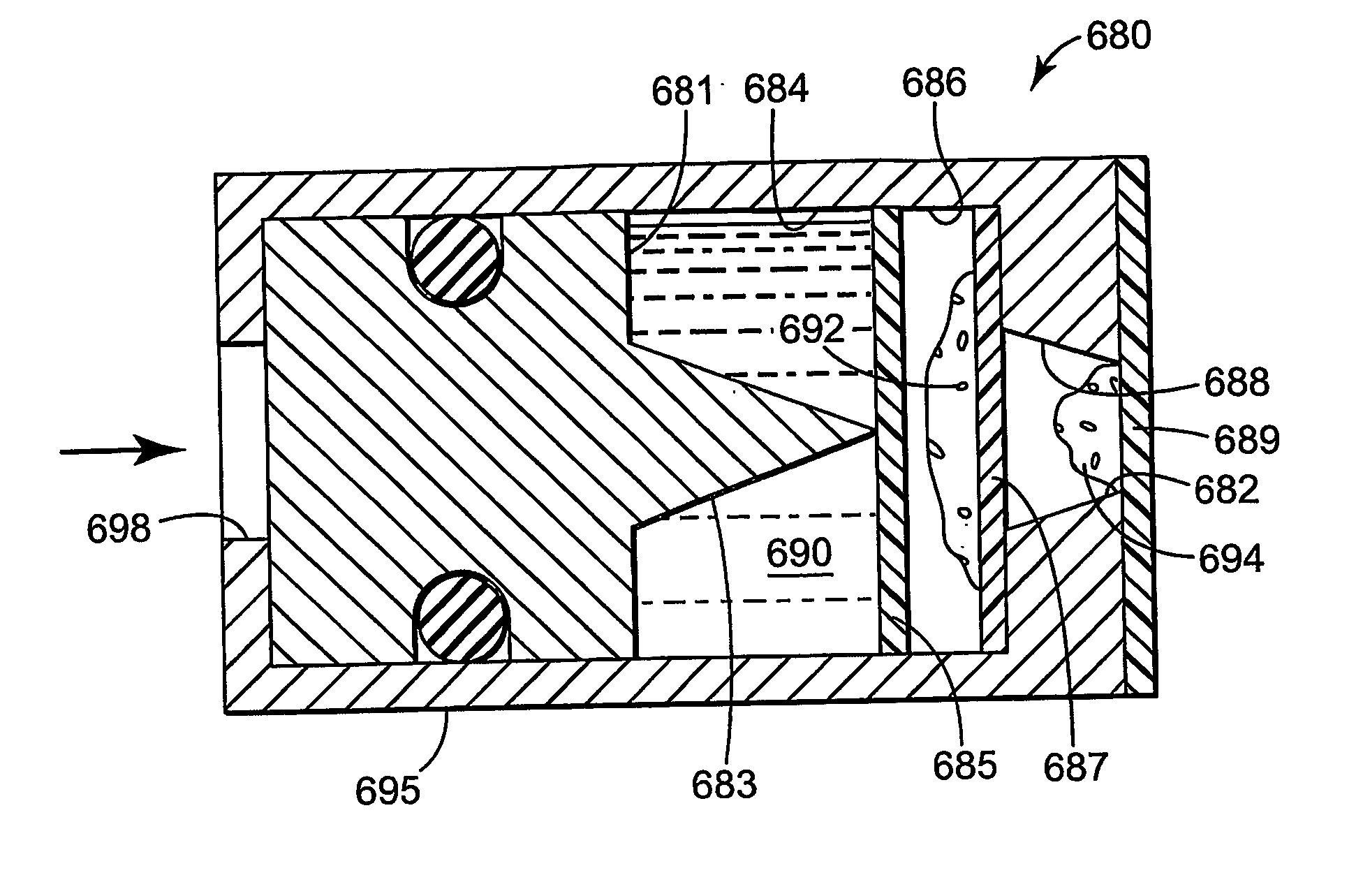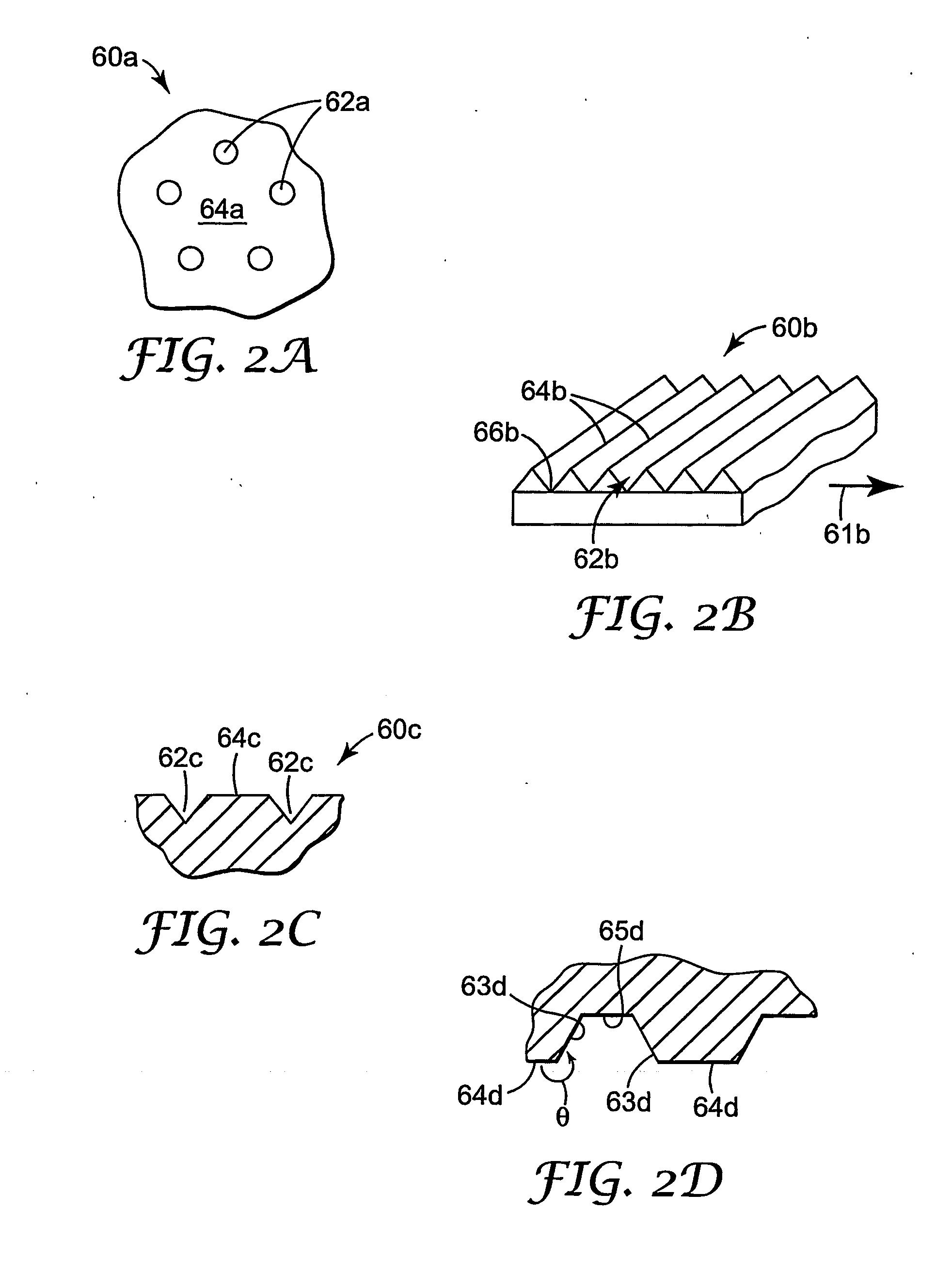Detection Cartridges, Modules, Systems and Methods
a technology of detection cartridges and cartridges, applied in the field of detection cartridges and methods, can solve the problems of reducing the sensitivity of acousto-mechanical detection systems, affecting the accuracy of target analytes, and difficulty in controlling both volumetric flow rate and fluid flow front progression, so as to facilitate the detection of different target analytes, reduce or prevent selective attachment, the effect of preventing contamination of the interior volum
- Summary
- Abstract
- Description
- Claims
- Application Information
AI Technical Summary
Benefits of technology
Problems solved by technology
Method used
Image
Examples
Embodiment Construction
[0055] In the following detailed description of exemplary embodiments of the invention, reference is made to the accompanying figures of the drawings which form a part hereof, and in which are shown, by way of illustration, specific embodiments in which the invention may be practiced. It is to be understood that other embodiments may be utilized and structural changes may be made without departing from the scope of the present invention.
[0056] In one aspect, the present invention provides detection cartridges that include an integrated sensor and fluid control features that assist in selective delivery of a sample analyte to the sensor. The exemplary detection cartridge 10 depicted schematically in FIG. 1 includes a staging chamber 20, detection chamber 30, waste chamber 40, sensor 50, volumetric flow control feature 70, and modules 80. In general, the detection cartridge 10 of FIG. 1 may be described as having an interior volume that includes the staging chamber 20, detection cham...
PUM
| Property | Measurement | Unit |
|---|---|---|
| diameter | aaaaa | aaaaa |
| volumes | aaaaa | aaaaa |
| volumes | aaaaa | aaaaa |
Abstract
Description
Claims
Application Information
 Login to View More
Login to View More - R&D
- Intellectual Property
- Life Sciences
- Materials
- Tech Scout
- Unparalleled Data Quality
- Higher Quality Content
- 60% Fewer Hallucinations
Browse by: Latest US Patents, China's latest patents, Technical Efficacy Thesaurus, Application Domain, Technology Topic, Popular Technical Reports.
© 2025 PatSnap. All rights reserved.Legal|Privacy policy|Modern Slavery Act Transparency Statement|Sitemap|About US| Contact US: help@patsnap.com



